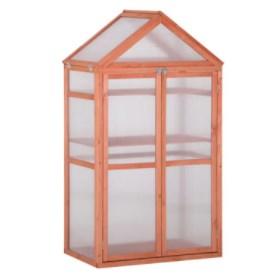As the summer sun blazes down, gardeners and horticulturists face the challenge of maintaining a comfortable environment within their custom wooden greenhouse. The unique structure of these greenhouses, while excellent for nurturing plant life throughout the year, can sometimes trap heat, leading to excessively high temperatures that may stress or even damage the plants within. This article delves into various strategies for effectively cooling custom wooden greenhouses during the summer months.
One of the first lines of defense against the summer heat is proper ventilation. Custom wooden greenhouses can be equipped with various types of vents, including roof vents, side vents, and even automated systems that open and close based on temperature readings. These vents allow hot air to escape while drawing in cooler air from outside, creating a natural convection current that helps to regulate the internal temperature.
Another effective cooling method is the use of shading materials. Custom wooden greenhouses can be fitted with shading nets or blinds that can be adjusted according to the intensity of the sunlight. These shading devices not only block direct sunlight but also reduce the overall light intensity, which can be particularly beneficial for plants that are sensitive to high light levels.
Misting systems are another popular choice for cooling custom wooden greenhouses. By releasing a fine spray of water into the air, these systems increase the humidity and create a cooling effect as the water evaporates. This not only lowers the air temperature but also provides an additional benefit of increased moisture for the plants, which can be especially important in arid climates.
In some cases, more advanced cooling systems may be necessary. Evaporative coolers, for example, use the principle of evaporation to cool the air that is drawn into the greenhouse. These systems can be particularly effective in dry climates, where the evaporation of water can have a significant cooling effect.
Water features, such as small ponds or fountains, can also serve a dual purpose in custom wooden greenhouses. Not only do they add an aesthetic touch to the environment, but they also contribute to cooling through the process of evaporation. The presence of water can help to moderate the temperature and create a more comfortable microclimate for the plants.
Insulation is another factor to consider when thinking about cooling custom wooden greenhouses. While insulation is often associated with keeping warmth in during the winter, it can also help to reflect heat away from the interior during the summer months. By using reflective insulation materials on the roof and walls of the greenhouse, it is possible to reduce the amount of heat that is absorbed by the structure itself.
Finally, the placement and design of the custom wooden greenhouse can have a significant impact on its temperature. Positioning the greenhouse to take advantage of natural shade from trees or other structures can help to keep the interior cooler. Additionally, the orientation of the greenhouse can be chosen to minimize the exposure to direct sunlight during the hottest parts of the day.
In conclusion, there are numerous strategies available for effectively cooling custom wooden greenhouses during the summer months. From simple ventilation and shading to more complex systems like evaporative coolers and water features, each greenhouse can be tailored to its specific needs and environment. By carefully considering these options and implementing a combination of cooling techniques, it is possible to maintain a comfortable and productive growing environment even in the heat of summer.



